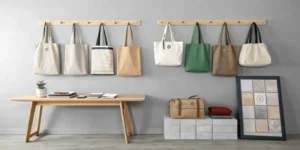
Our Academy
Jacky Zhou
May 31, 2025
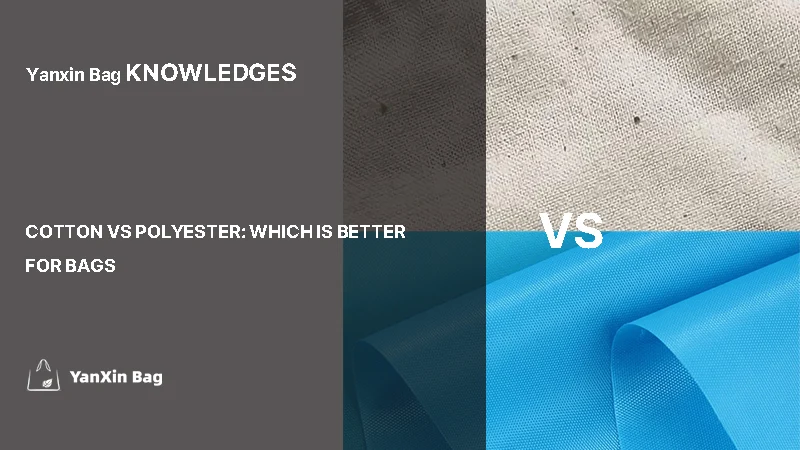
When planning marketing campaigns for your business, customizing employee welcome kits, or developing your own brand’s product line, the choice of bag material is often a critical factor that impacts the final outcome, cost control, and brand image. Faced with natural and eco-friendly cotton versus economical and durable polyester, which one can more precisely match your business needs and budget considerations? This article will provide you with a professional analysis to assist in your B2B purchasing decisions.
Cotton bags, with their natural eco-friendly properties, good breathability, and excellent printing and customization capabilities, are particularly suitable for corporate clients who emphasize brand culture transmission, pursue personalized designs, and practice sustainable development concepts. In comparison, polyester bags are favored in B2B bulk purchasing projects with strict requirements for durability, specific functionalities (like waterproofing), or budget, due to their outstanding wear and tear resistance, excellent waterproof and moisture-proof characteristics, and significant cost-effectiveness.
Having been deeply involved in the bag manufacturing industry for 13 years, as the head of Yanxin Bags, I have a profound understanding of the characteristics, applications, and cost structures of cotton and polyester, these two core fabrics. They are not just a distinction of materials but also represent different market positioning and brand expression. To help you quickly grasp key information among the many options and efficiently make the most beneficial purchasing decisions for your company, we will first present a Core Characteristics Comparison Overview Table to intuitively show the differences, and then proceed with a more in-depth analysis based on this.
Natural Fiber: The raw material for cotton fabric is cotton, the white, fluffy fibers harvested from the common cotton plant. This is a natural fiber.
Becoming Fabric: Harvested cotton fibers go through a series of spinning processes like cleaning, carding, drawing, roving, and spinning to become cotton yarn. This yarn is then woven into cotton fabric using a loom. In our country, the industry generally refers to cotton fabrics below 8 ounces (OZ) as cotton cloth, which is relatively lightweight. Fabrics 8 OZ and above are typically called canvas, which is thicker and more wear-resistant. This article mainly discusses the lightweight cotton cloth under 8OZ.
Curious about how canvas compares? Don’t miss our breakdown in Pros and Cons of Canvas Bags
Synthetic Fiber from Petroleum: Polyester is not natural; it’s synthesized using chemical methods from raw materials derived from petrochemical products like petroleum or coal.
Becoming Fiber then Fabric: These chemical raw materials undergo a series of complex polymerization reactions to become polyester chips. These chips are then melted and drawn into very fine threads, much like pulling noodles. These threads are polyester fibers, which are finally woven into fabric, creating polyester cloth. Many of the promotional bags and drawstring backpacks our factory makes are polyester.
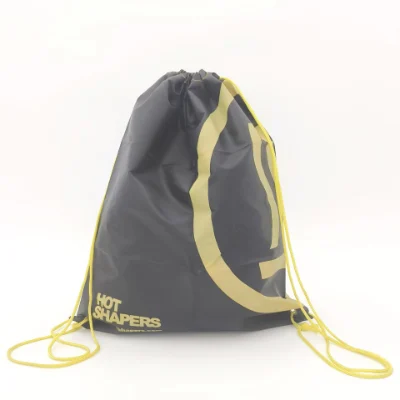
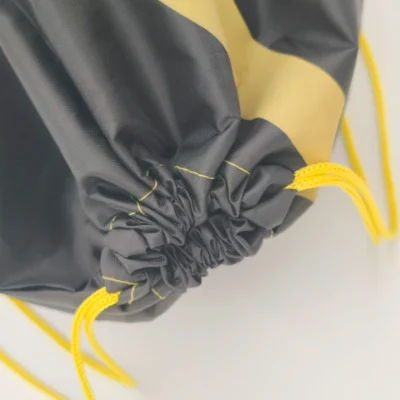
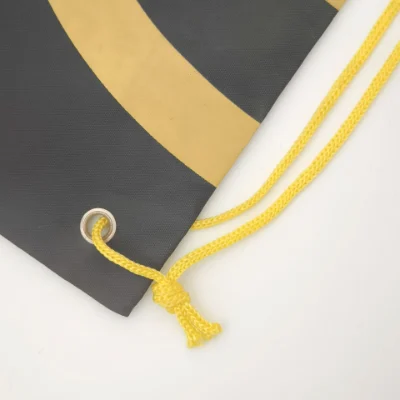
Want to explore more about polyester bags? Check out our detailed guide on What’s the Pros of Polyester Bags?
To get a more direct grasp of the core differences between cotton and polyester in bag making, we’ll first use a concise list to quickly compare their characteristics across key dimensions. This will give you an initial impression and help you quickly identify the material direction that suits your needs.
| Comparison Dimension | Cotton | Polyester |
|---|---|---|
| 1. Source & Composition | Natural plant fiber (from cotton) | Synthetic chemical fiber (polyester fiber) |
| 2. Thickness & Feel | Lightweight, soft, natural feel, good drape. | Various models: thin and smooth (e.g., 190T/210D), thick and stiff (e.g., 420D/600D Oxford). |
| 3. Eco-friendliness | Naturally biodegradable. | Virgin material hard to degrade; Recycled polyester (RPET) is an eco-friendly alternative. |
| 4. Appearance & Style | Natural, simple, artistic feel, suitable for minimalist, eco-friendly styles. | Smooth, modern, wide variety of bright colors, suitable for sports, casual, functional styles. |
| 5. Durability & Lifespan | Relatively low, prone to wear and tear, shorter lifespan. | Usually very durable, excellent tear and abrasion resistance. |
| 6. Waterproof Performance | Naturally absorbent, not waterproof. | Inherently water-repellent; excellent waterproof performance after coating. |
| 7. Breathability & Comfort | Good breathability, skin-friendly. | Poor breathability, can feel stuffy. |
| 8. Customization & Printability | Decent ink absorption, screen printing gives a rustic effect; digital direct injection colors are relatively soft. | Smooth surface, good for screen printing; heat sublimation/transfer offers vibrant, high-precision colors. |
| 9. Purchasing Cost | Moderately priced, organic cotton is higher. | Thin materials are cost-effective; thick materials (like Oxford cloth) still offer cost advantages due to durability. |
| 10. Foldability & Portability | Lightweight and easy to fold, but wrinkles easily and noticeably. | Thin materials extremely easy to fold (first choice for foldable bags); thicker materials fold less easily. |
| 11. Washing & Maintenance | Prone to shrinking, deformation, color bleeding; wrinkles easily, needs ironing. | Easy to clean, quick-drying, wrinkle-resistant, simple maintenance; avoid high temperatures. |
After getting an initial overall impression of cotton and polyester, we will now conduct a more in-depth and detailed comparative analysis of the 11 key dimensions mentioned above. This will help you fully understand the specific performance of each material in different aspects, thereby providing a more sufficient basis for your bag purchasing and customization decisions.
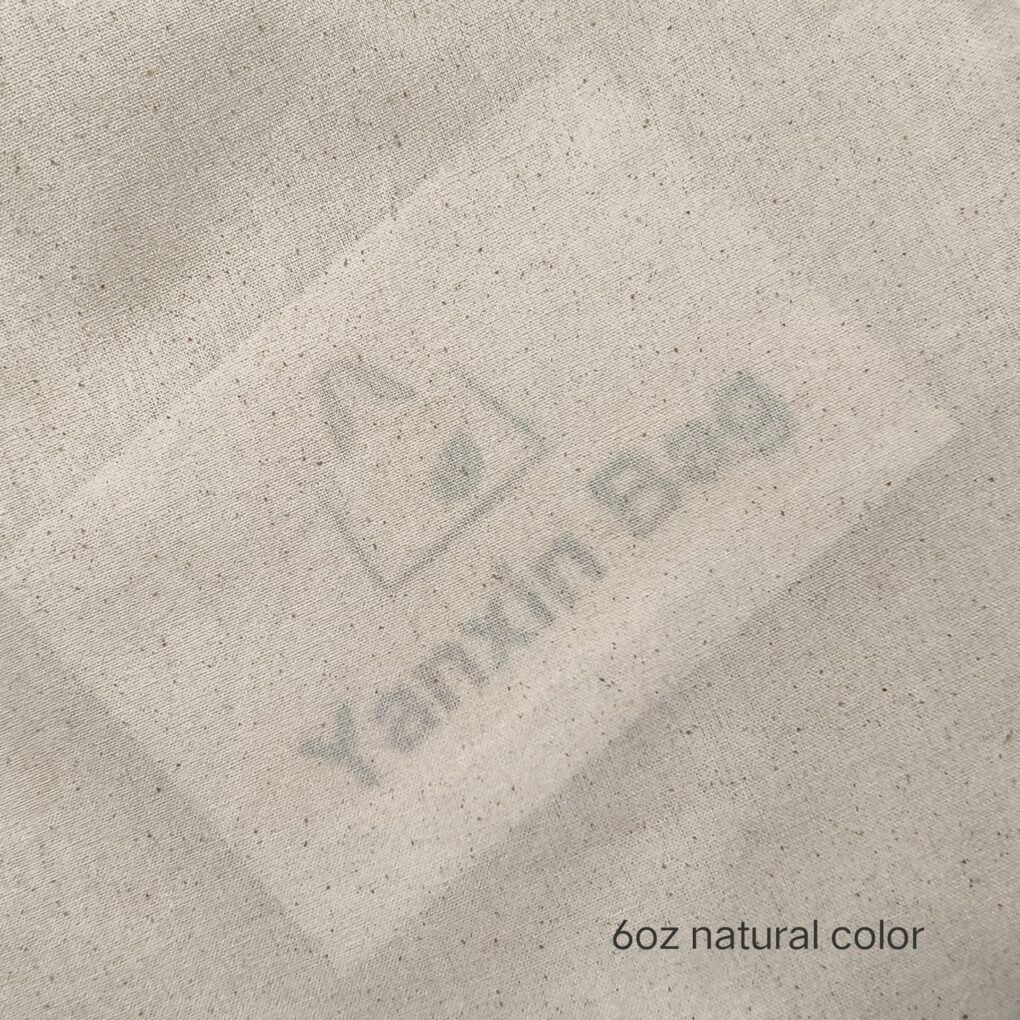
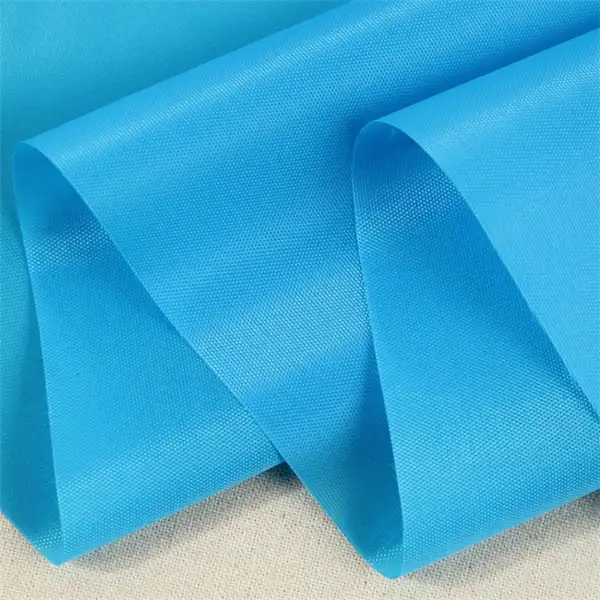
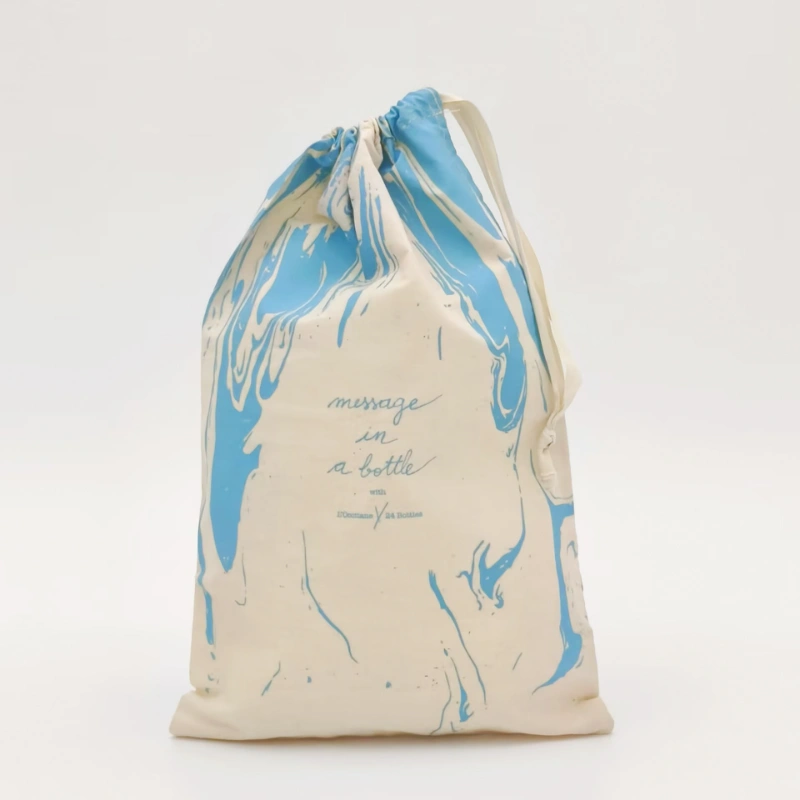
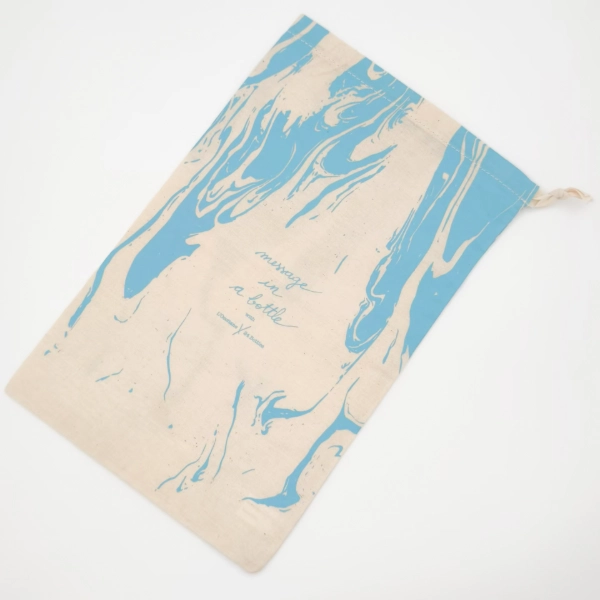
After all this, how do you choose?
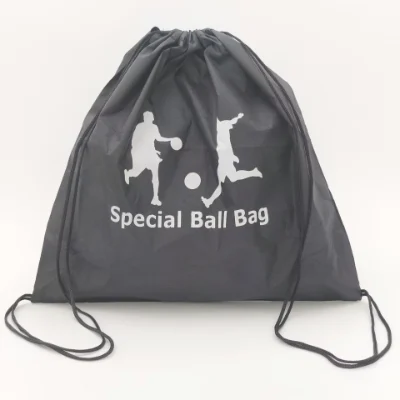
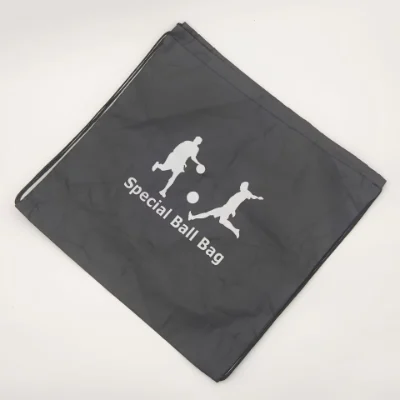
Cotton and polyester each have their advantages; neither is absolutely “better,” only “more suitable” for you.
Simply put, cotton is natural, breathable, and good for printing, but it wrinkles easily, gets dirty easily, and isn’t as durable. Polyester is durable, waterproof, and inexpensive, but it’s not breathable1 and less eco-friendly (virgin polyester). The key is to consider what you value most: eco-friendliness, durability, price, appearance, or other specific functions. Think it through before making a decision.
Yanxin Bag is a professional custom bag factory with 13 years of export experience, serving global brands and distributors long-term. We offer various types of cotton bags, polyester bags, RPET eco-friendly bags, and more. We support custom sizes, colors, printing, and packaging methods to help you create unique branded bag solutions.
Contact us now to get free design advice and sampling services, and start your exclusive customization journey! Let us help you create custom cotton bags or custom polyester bags that truly align with your brand philosophy. Looking for a trustworthy bag manufacturer or bag factory? Yanxin Bag is your ideal partner.
1 Exploring the importance of breathability can enhance your comfort and performance in various activities, making it a key factor in your clothing choices.
Learn about the history, manufacturing, and uses of canvas material on the Wikipedia Canvas page.
Learn about the environmental impact of canvas bags and their eco-friendly alternatives on the Ethically Engineered website.
Explore sustainable canvas fabric options and their life cycle analysis on the Knowing Fabric website.
Q1: What are the main differences between cotton and polyester bags?
Answer: Cotton bags are made from natural plant fibers and are eco-friendly, breathable, and easy to print on, while polyester bags are made from synthetic fibers, offering superior durability, water resistance, and cost-efficiency.
Q2: Are cotton bags biodegradable and environmentally friendly?
Answer: Yes, cotton bags—especially those made from organic cotton—are naturally biodegradable and a great choice for eco-conscious businesses looking for sustainable custom tote bags.
Q3: Which material is more suitable for foldable shopping bags, cotton or polyester?
Answer: Polyester is more suitable for foldable shopping bags due to its wrinkle resistance, lightweight nature, and better foldability compared to cotton, which wrinkles easily after folding.
Q4: Are polyester bags waterproof?
Answer: Polyester bags are inherently water-resistant and can be coated with materials like PU or PVC to enhance waterproof performance, making them ideal for outdoor or travel use.
Q5: Can I print my logo on both cotton and polyester bags?
Answer: Yes, both materials are printable. Cotton bags are ideal for screen printing and DTG with a rustic finish, while polyester bags work well with sublimation and heat transfer printing for vibrant, detailed logos.
Q6: Which type of bag is better for promotional giveaways—cotton or polyester?
Answer: Polyester bags are generally better for promotional giveaways due to their lower cost, lightweight design, and high durability, especially when large volumes are needed for events or campaigns.
Q7: Do polyester tote bags feel comfortable to carry?
Answer: While polyester bags are lightweight and practical, they tend to feel less soft and breathable than cotton bags. Cotton is preferred when comfort and a natural feel are priorities.
Q8: What is RPET, and is it a good alternative to virgin polyester bags?
Answer: RPET (Recycled Polyester) is made from recycled plastic bottles and is a more sustainable alternative to virgin polyester. It combines durability with eco-conscious benefits, making it ideal for environmentally friendly promotional bags.
Q9: How long do cotton and polyester bags typically last?
Answer: Polyester bags usually last longer due to their high tear and abrasion resistance. Cotton bags are less durable but can last a long time if used for light loads and handled with care.
Q10: Where can I find a reliable custom cotton bag manufacturer or polyester bag factory?
Answer: Yanxin Bag is a trusted bag manufacturer offering custom cotton bags, polyester tote bags, and RPET eco bags. With 13 years of experience, we help global clients design and source high-quality, sustainable, and affordable bags tailored to their brand needs.

Order or no-order we are Always here to help you!
We will contact you within 1 working day, please pay attention to the email with the suffix “@yanxinbag.com”.
Order or no-order we are Always here to help you!
We will contact you within 1 working day, please pay attention to the email with the suffix “@yanxinbag.com”.